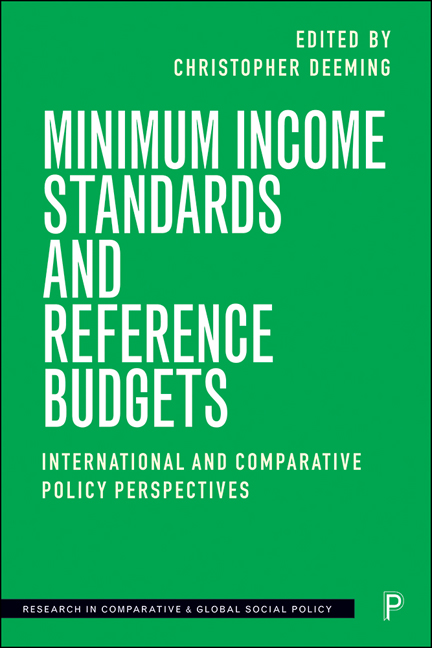13 - The Norwegian Reference Budget
Published online by Cambridge University Press: 12 March 2021
Summary
Introduction
The Norwegian reference budget was first published in 1987 (Borgeraas, 1987), and developed as a method to estimate reasonable monthly living costs for Norwegian households of various sizes and compositions. Since then, the Norwegian reference budget has been used actively by several private and public stakeholders and has proven influential as a tool for policy development in the area of social policy. It is also actively used by other stakeholders such as public and commercial banks and financial advisers, and as a tool in financial education.
As this volume clearly shows, the reference budget methodology is well established worldwide. This can further be illustrated by the findings of a 2014 mapping of European reference budgets which identified 65 unique reference budgets, of which 38 are in use and 12 are under construction (Storms et al, 2014). This broad use of reference budgets indicates that they represent a solid method for estimating living costs, amongst other things. However, as also shown by Storms et al (2014), the various reference budgets vary greatly when it comes to key aspects such as purpose, targeted living standards, conceptual frameworks, methods and use. In order to enable the various budgets to learn from one another, and to potentially develop a well-functioning common reference budget methodology, it is of key importance to understand the specifics of the various budgets and how they have influenced policies in their contexts.
Against this background, the goal of this chapter is twofold. First, we present and situate the Norwegian reference budget methodology within this broader framework, highlighting aspects where the Norwegian approach deviates from other established approaches. Second, we present and discuss the impacts and influences the Norwegian reference budget has had, and still has, on policy and practice. These are important endeavours for the continuous work on the development and future-proofing of the reference budget methodology, both in Norway and elsewhere.
This chapter first presents the Norwegian reference budget along three aspects where it clearly deviates from many other reference budgets. These are the targeted living standard, the target population and the expert-led methodological approach. Thereafter, the policy impacts of the budget are briefly presented, before the key choices and the impacts they have had on the policy impacts and the legitimacy of the Norwegian reference budget are discussed.
- Type
- Chapter
- Information
- Minimum Income Standards and Reference BudgetsInternational and Comparative Policy Perspectives, pp. 185 - 196Publisher: Bristol University PressPrint publication year: 2020



